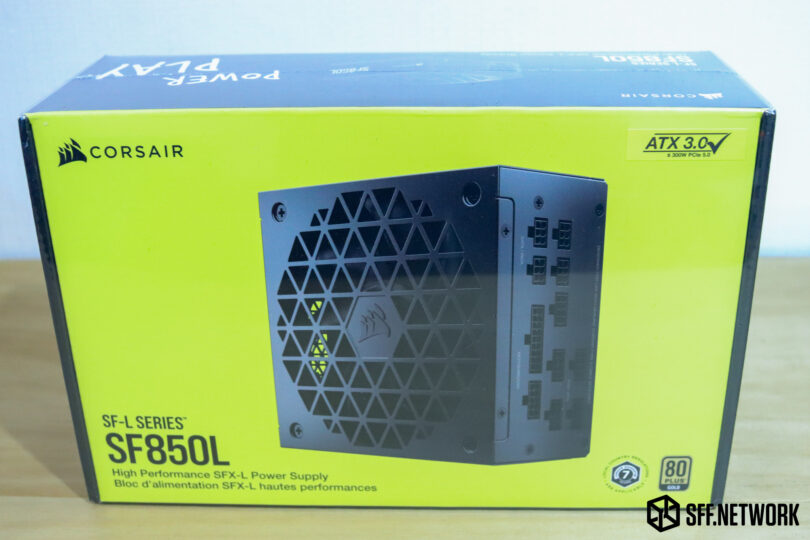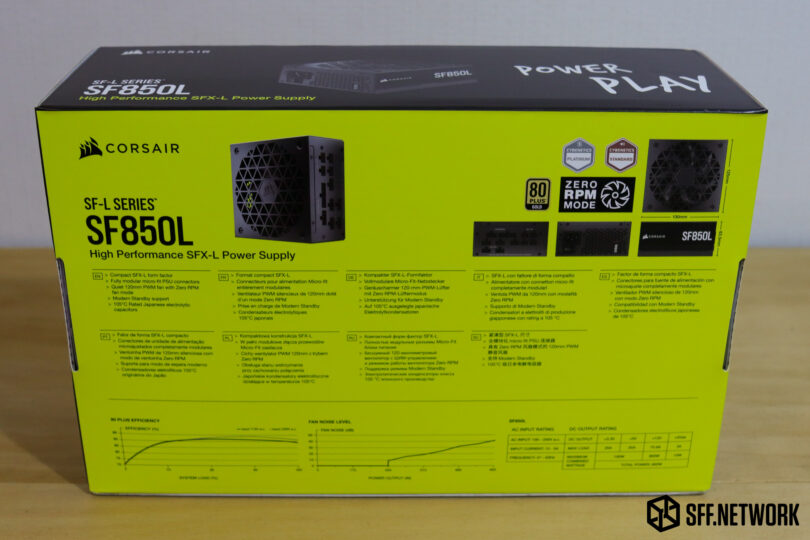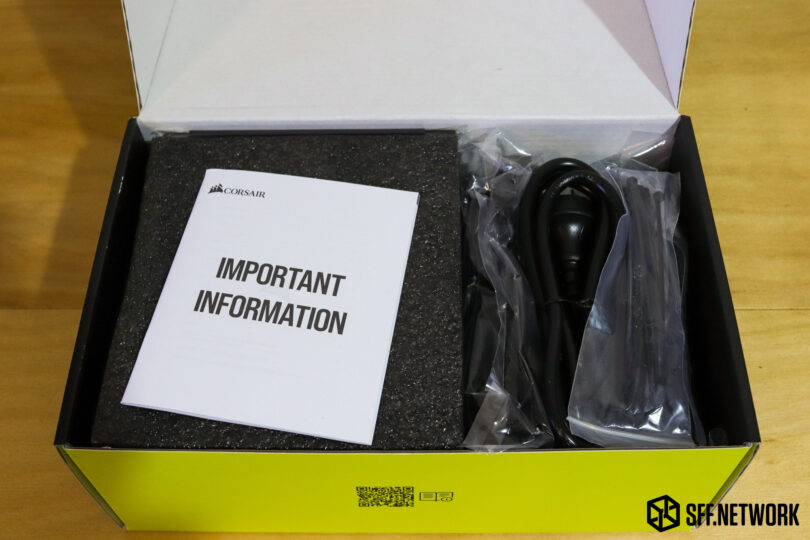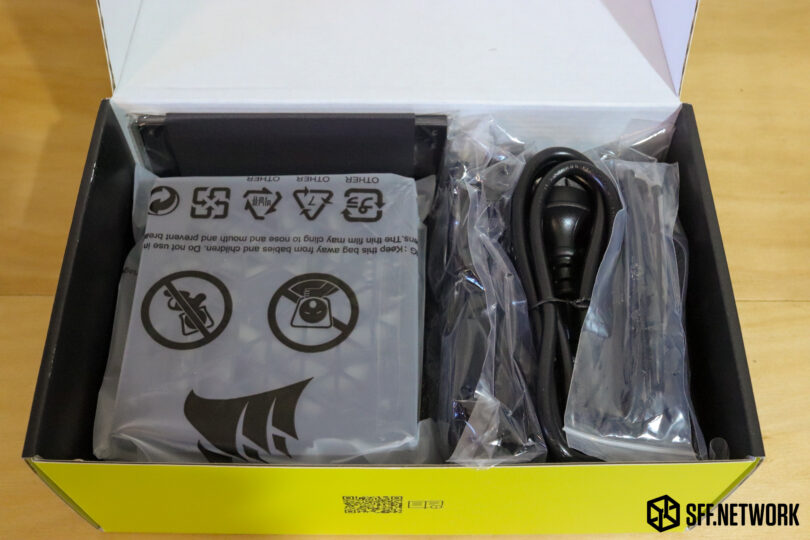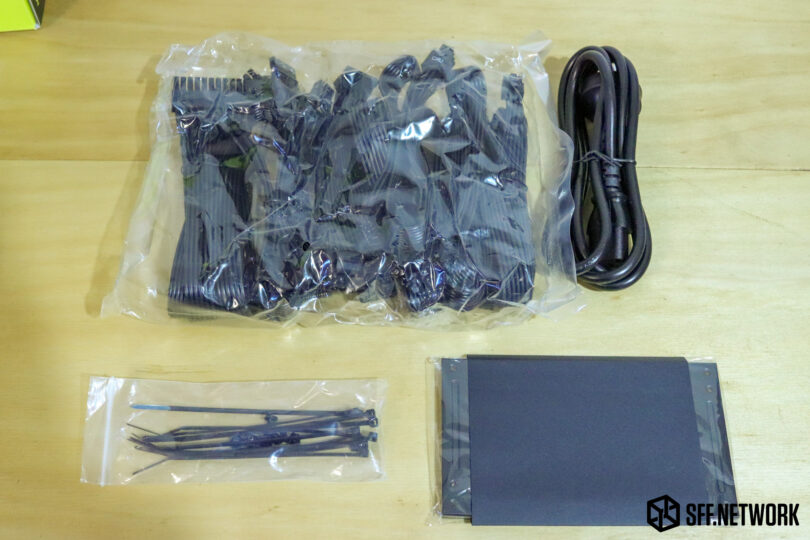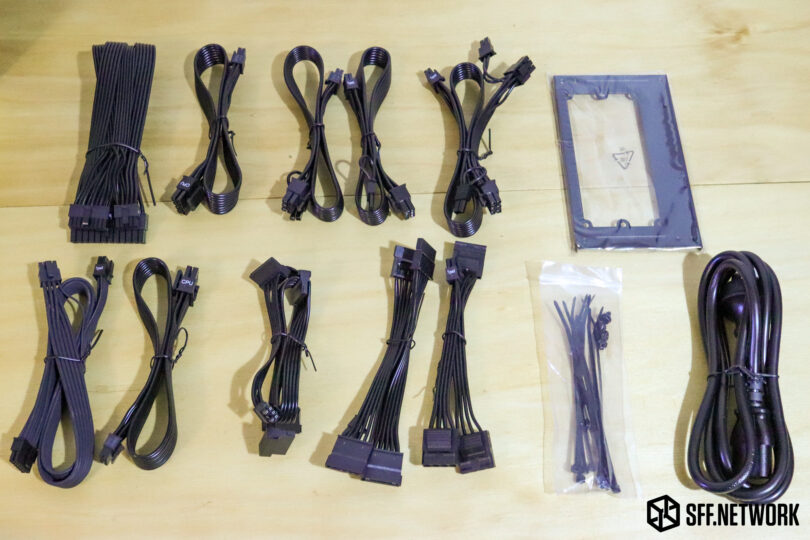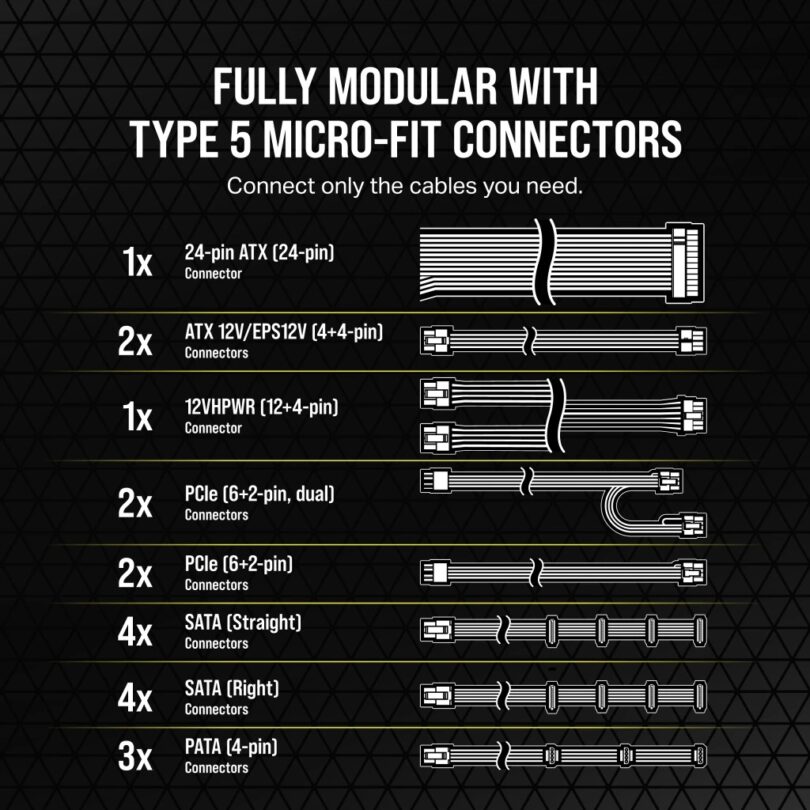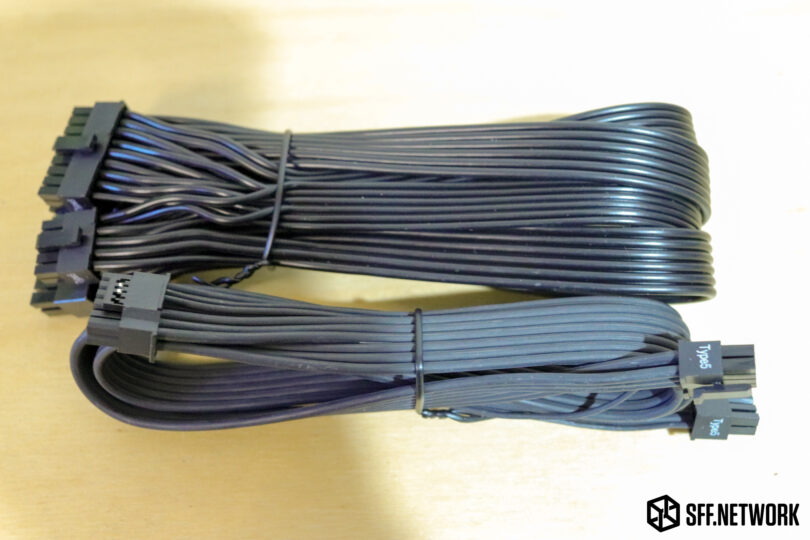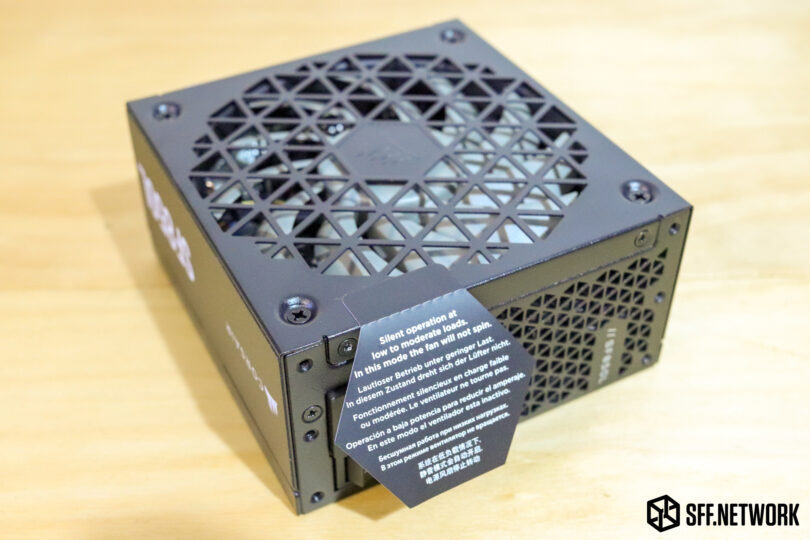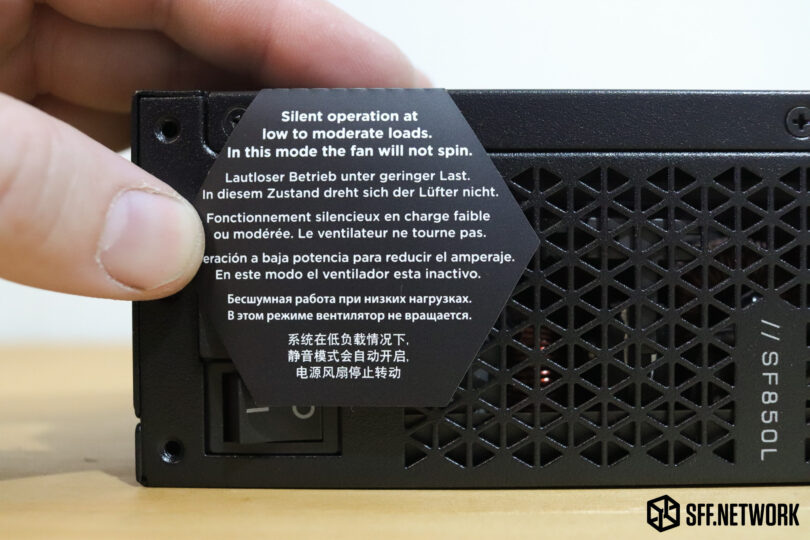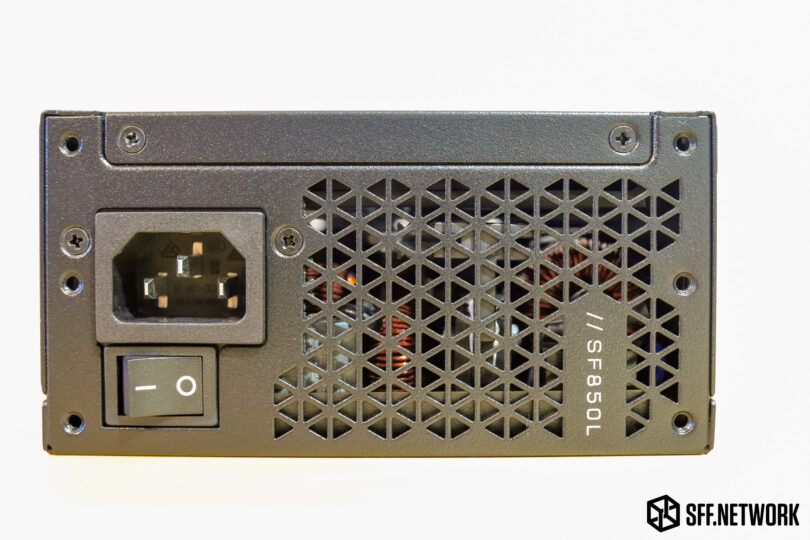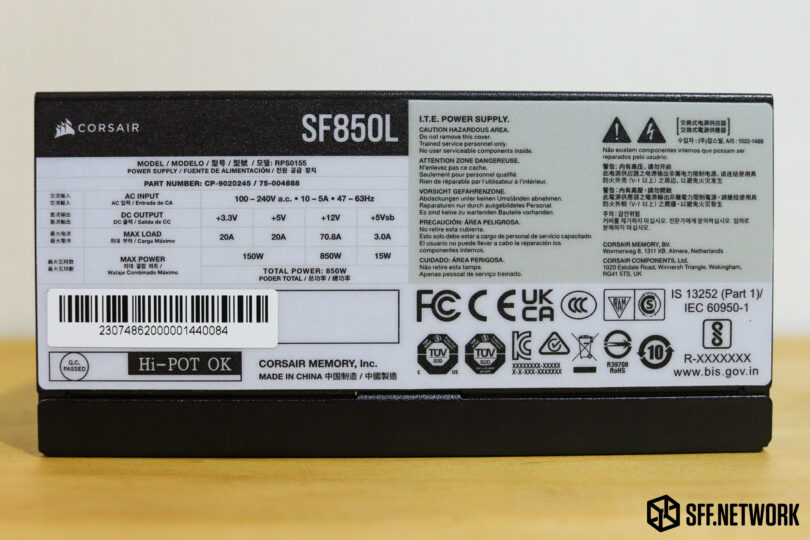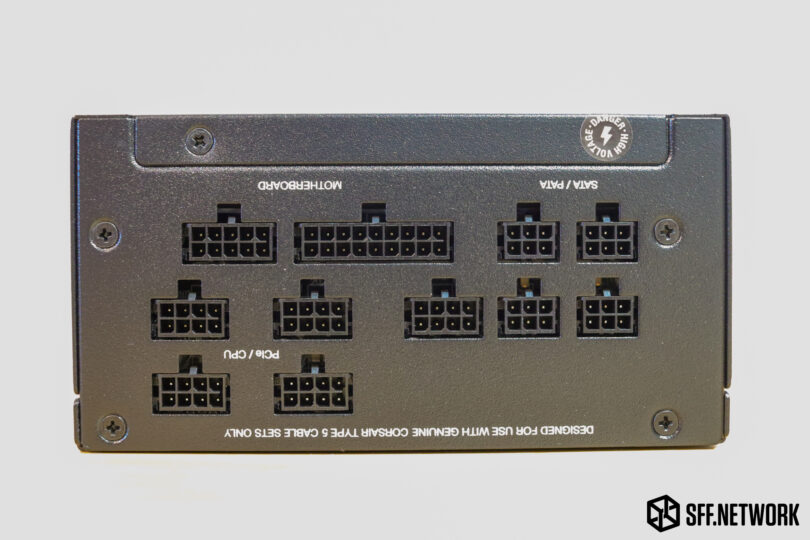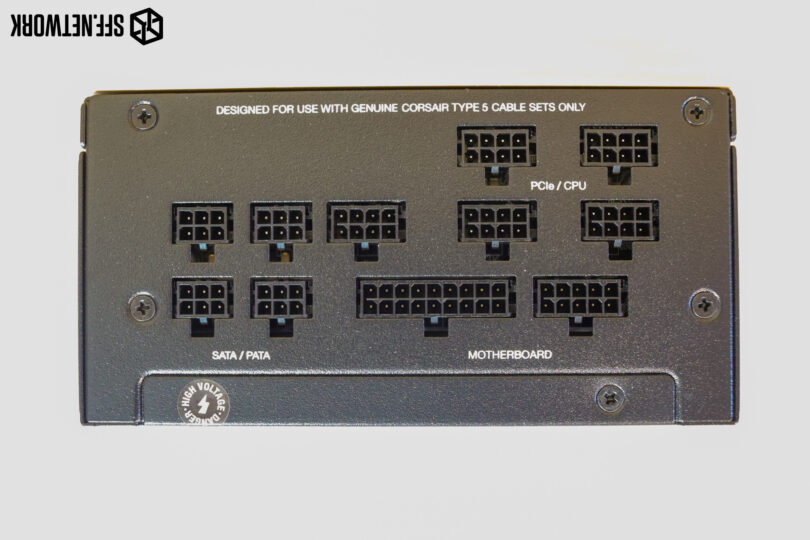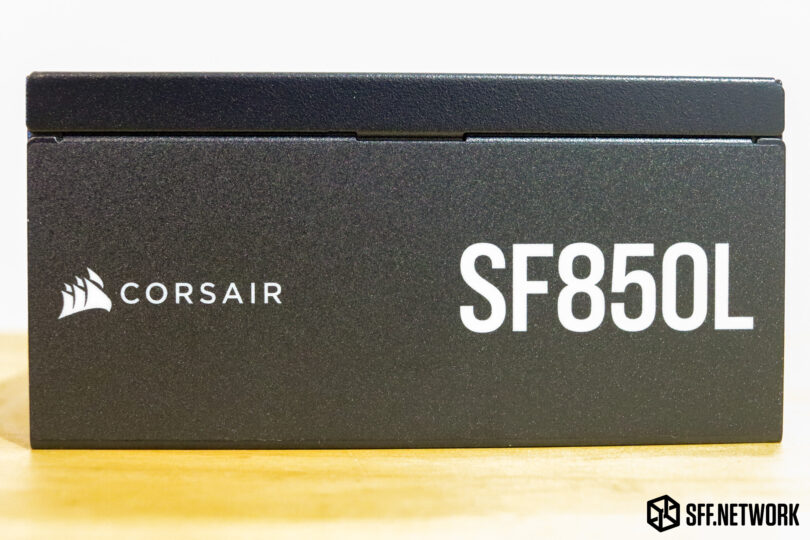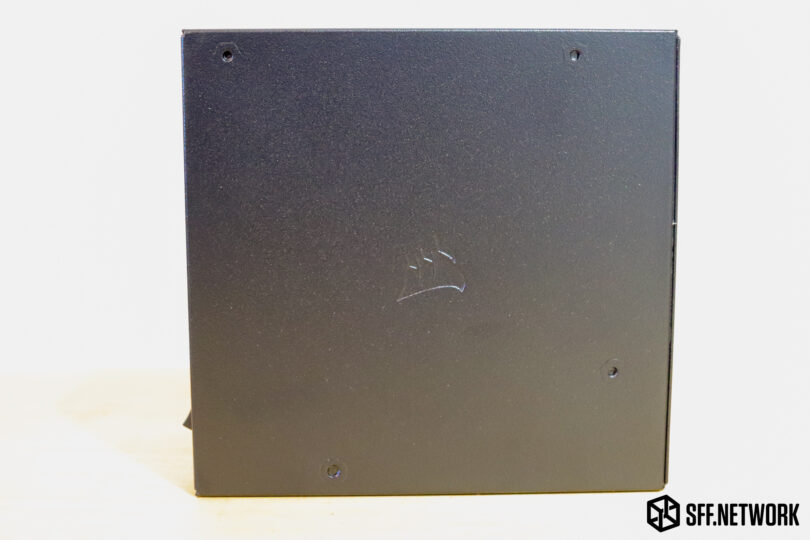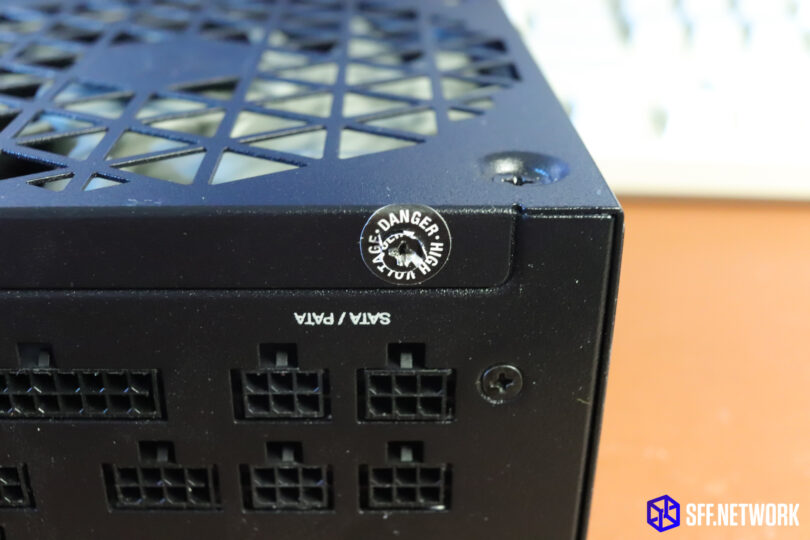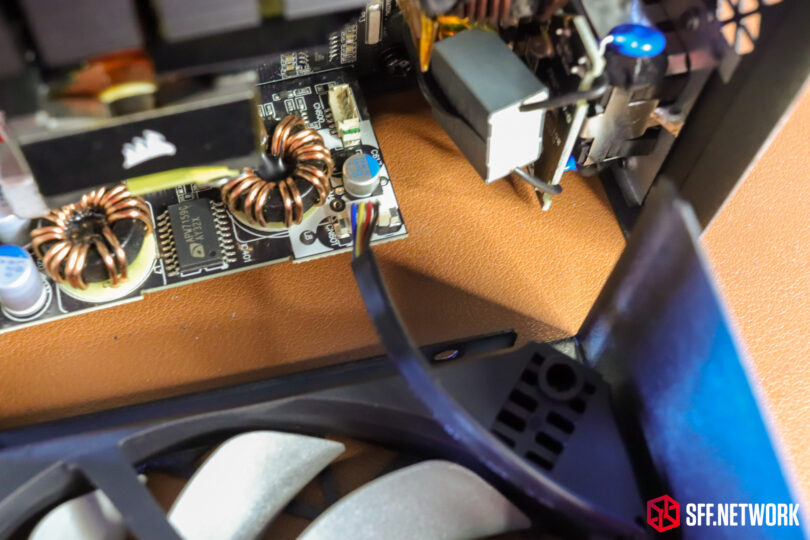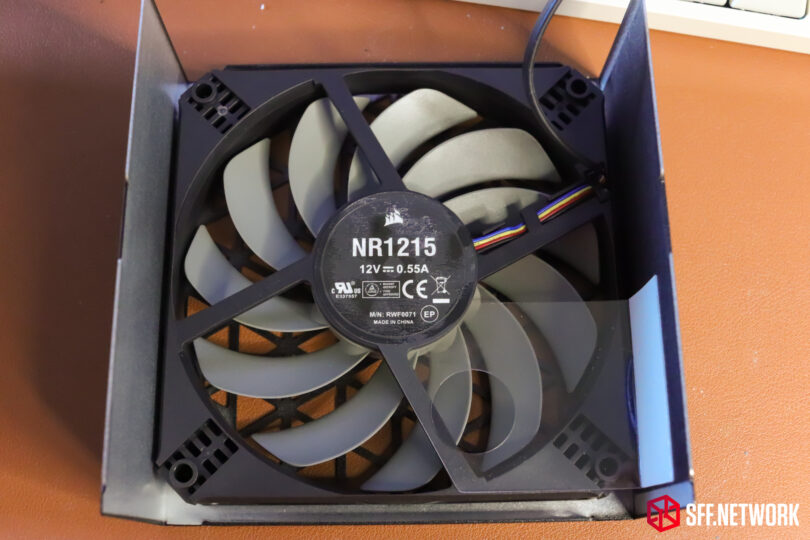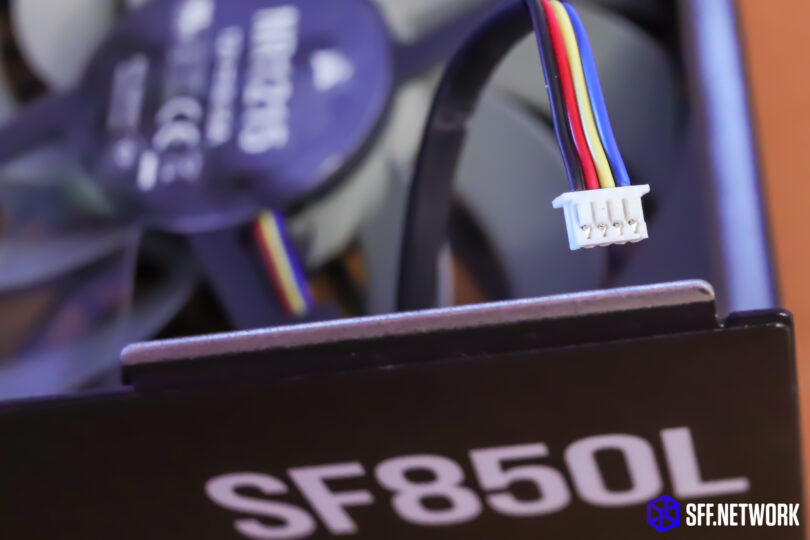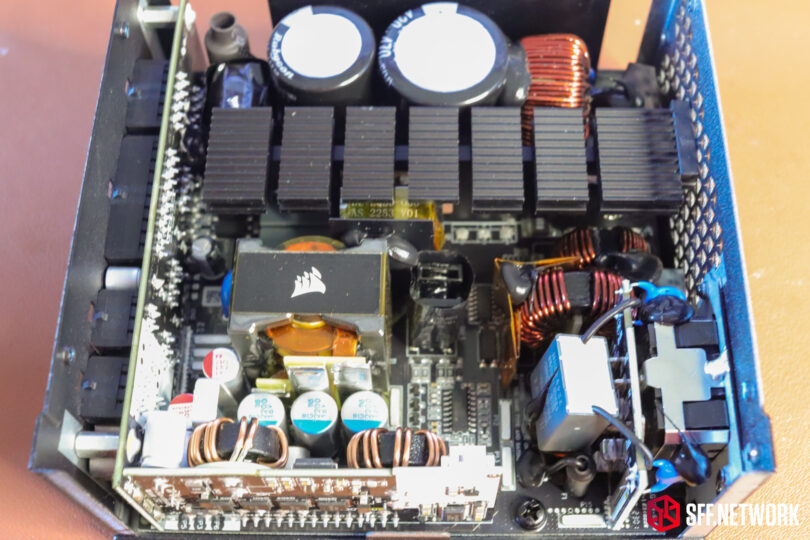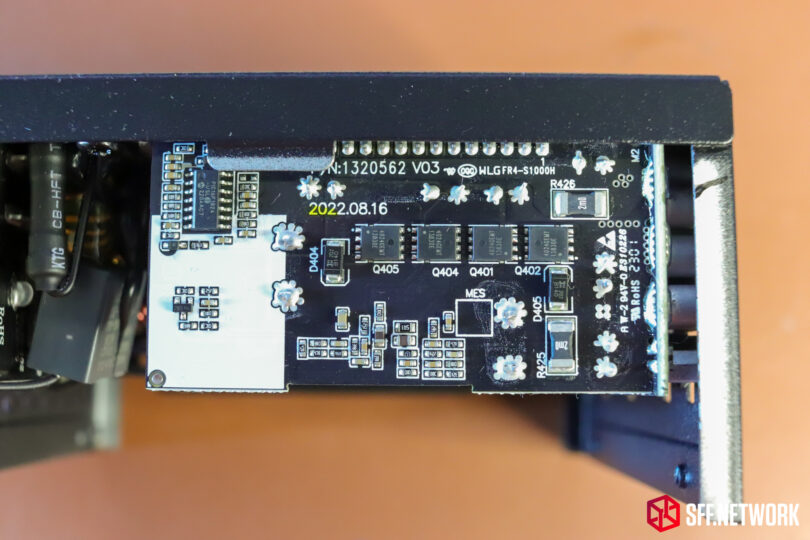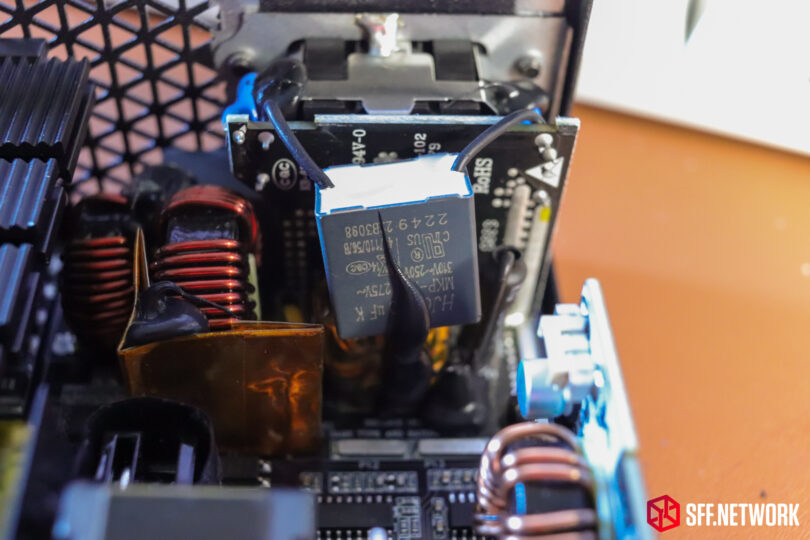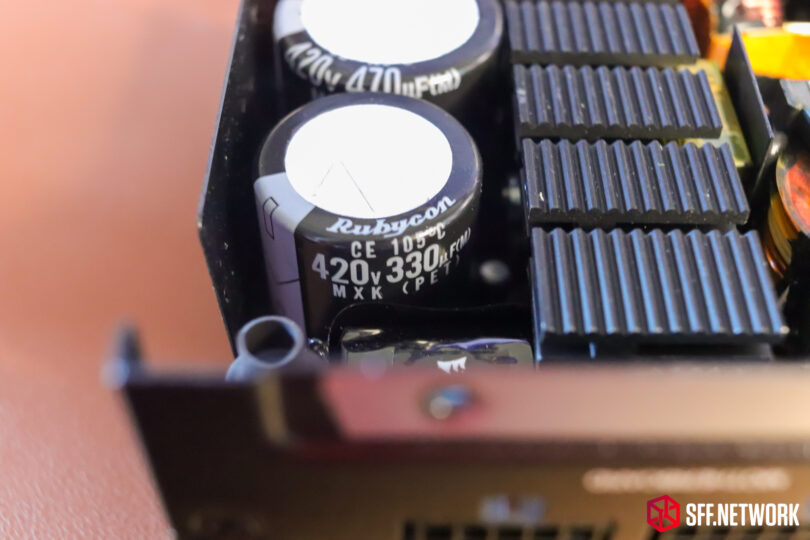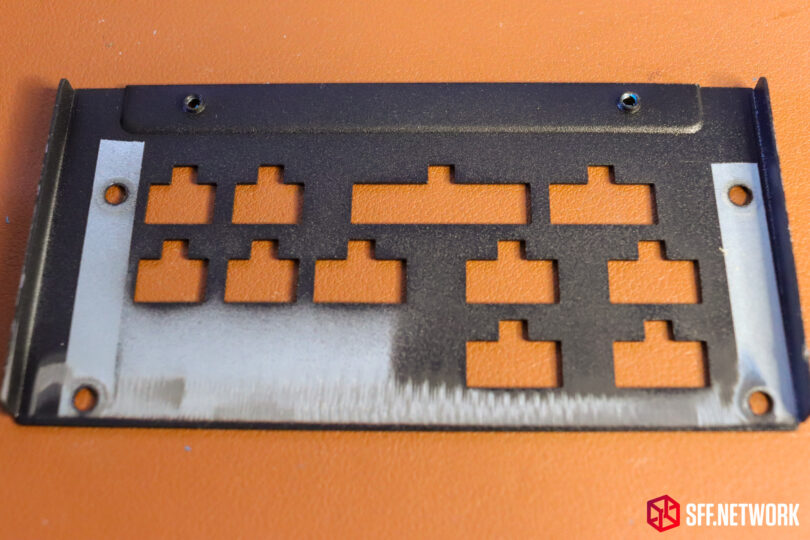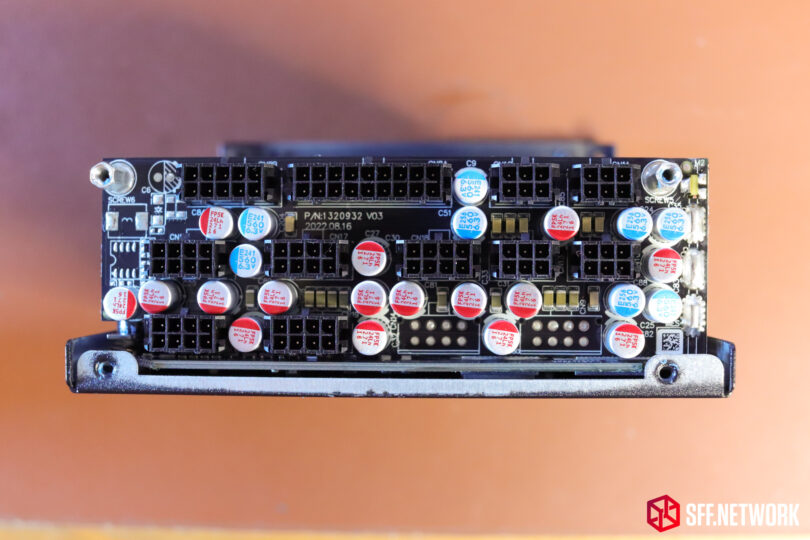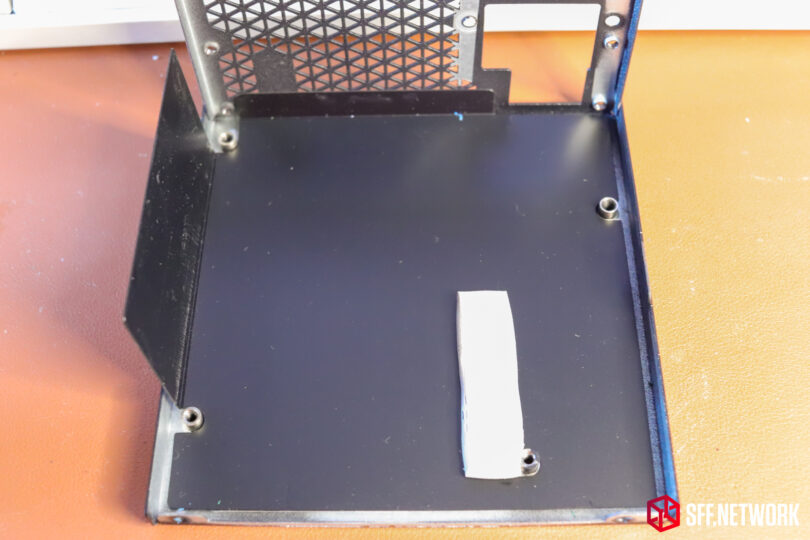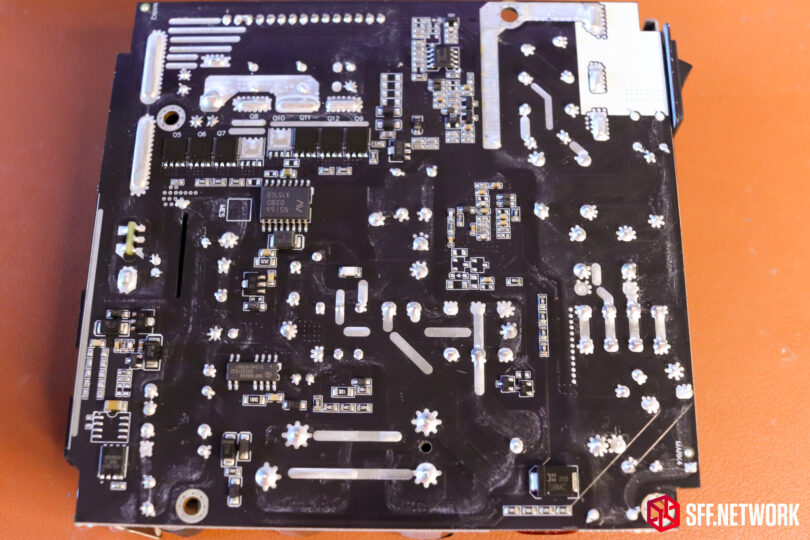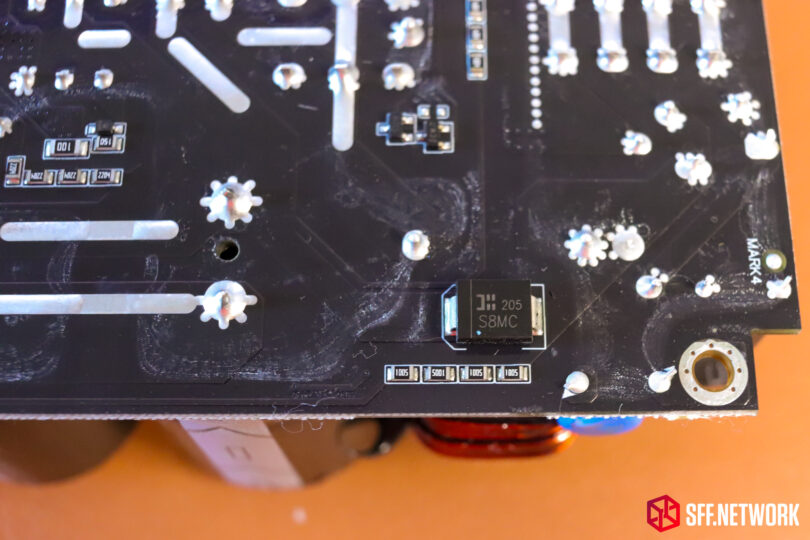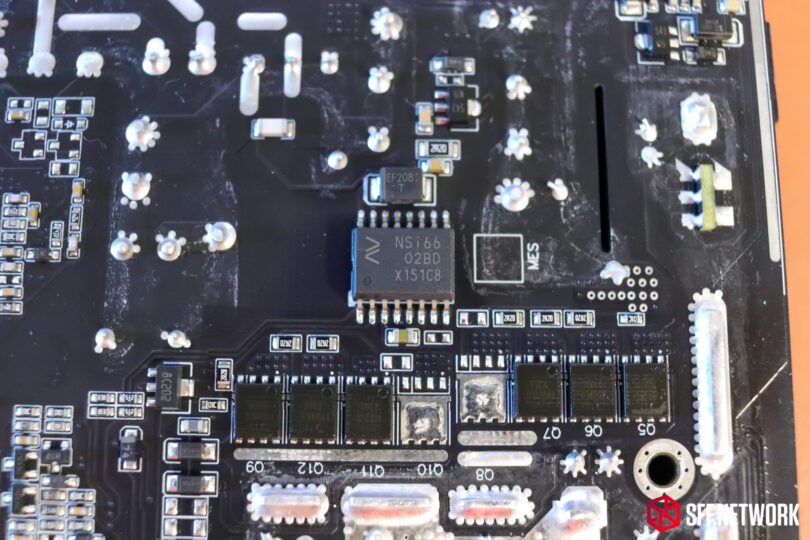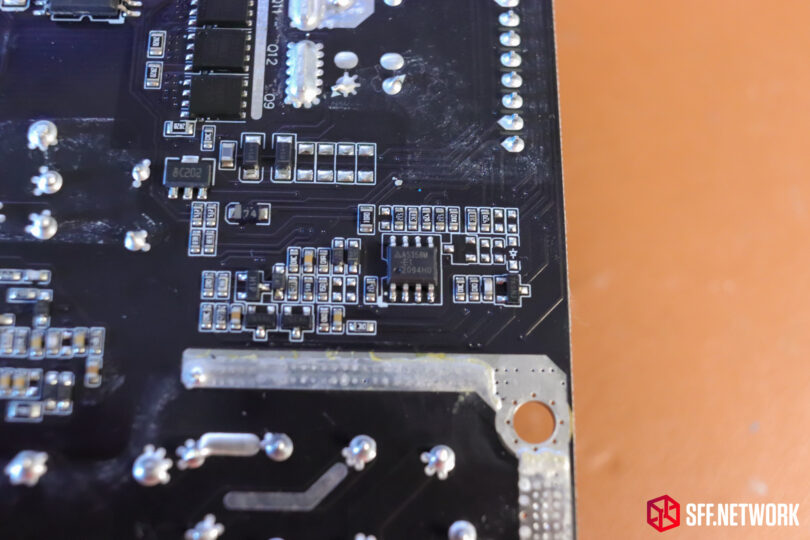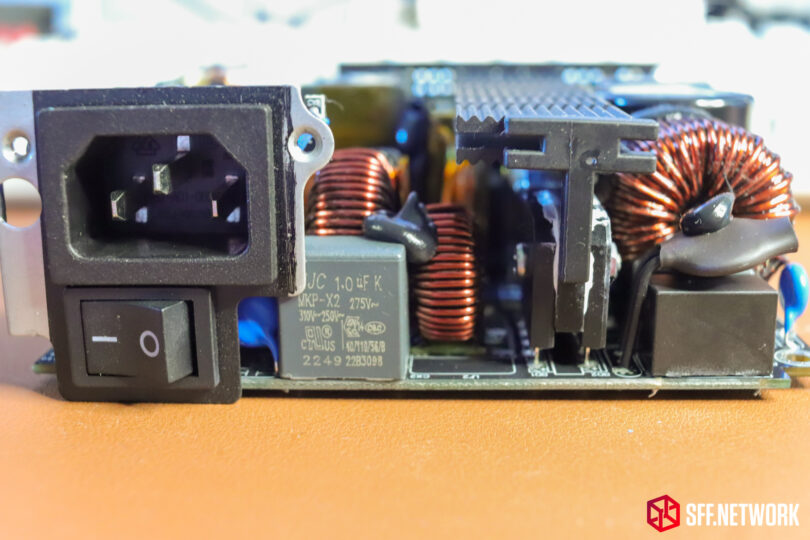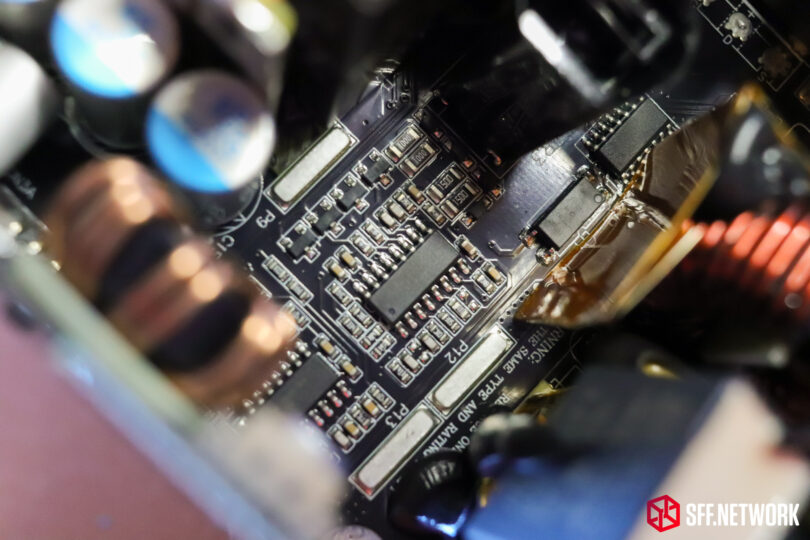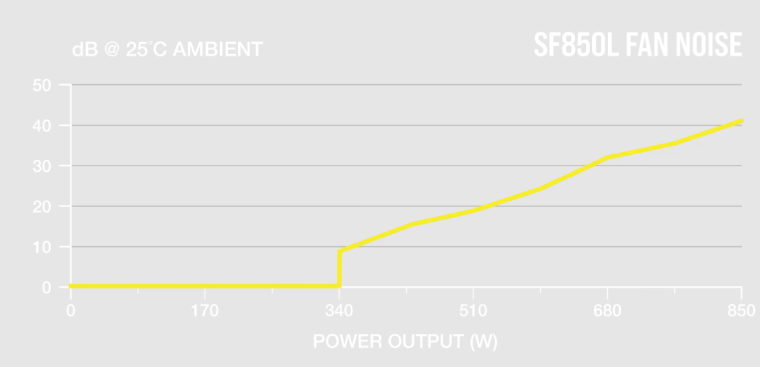Many thanks to CORSAIR for supplying SFF Network with this review sample.
Before we get started – SFF Network does not currently possess the hardware, testing equipment and skillset to fully analyse and opine on power supplies. We encourage readers to read other reviews and coverage on reviewed products (and this applies to all the content we produce) to ensure that valid and justified purchasing decisions are made.
CORSAIR’s venerable SFX power supply range, regularly touted by the SFF community as the go-to power supply for any powerful builds, has a new family member – the SF850L. Today we’ll have a look at this new entrant to the market, and see if it’s up to the hype.
We’ve reviewed some of CORSAIR’s older SFX power supplies – here, and here.
A quality power supply is paramount to a reliable PC, especially in Small Form Factor, where we run the tolerances a lot tighter than most. Our systems run hotter, with less airflow, and sometimes close to the power limit of some components. With today’s thirsty thirsty CPUs and GPUs, feeding the beast can be a formidable challenge! We’ve seen many flakey power supplies cause issues in our #advice section of our Discord server – so it’s clear that selecting the right unit for your build is critical.
Table of Contents
Specifications
| Wattage | 850W Continuous |
| Certification | 80 Plus Gold |
| ATX Version | ATX 12V V3.0 |
| Form Factor | SFX-L |
| Dimensions | 125 x 65 x 130mm |
| Weight | 1.13 kg |
| MTBF Rating | 100,000 hours |
| Fan | 120x15mm, FDB Bearing |
| Modular | Yes |
| Efficiency Certifications | Cybenetics Efficiency: [115V] Cybenetics Platinum (89-91%), 80 Plus Efficiency: Gold |
| AC Input | 100 – 240V |
| Input Current | 10A – 5A |
| Frequency | 47 ~ 63Hz |
| Max Load | Max Output | |
| +3.3V | 20A | 150W |
| +5V | 20A | |
| +12V | 70.8A | 850W |
| +5VSB | 3A | 15W |
| Total Power | 850W | |
Pricing at time of publication;
| NewEgg (US) | Scan (UK) | Computer Lounge (NZ) | MWave (AUS) | Canada Computers (CAN) | Tsukomo (JP) | |
| Full Retail Price | US$159.99 | US$239.13 (GB£189.98) | US$195.95 (NZ$329.00) | US$154.44 (AU$239.00) | US$173.16 (CAN$234.99) | US$142.95 (JP¥20,900) |
The price variance across the various worldwide vendors is crazy! Depending on where you live, you could be spending 60% of what another SFF’r could be paying somewhere else. Ouch. I’ve ignored any promotional pricing.
Warranty
The CORSAIR SF series power supplies ship with a 7 year limited warranty. This is a 3 year shorter period than the 10 years of the ASUS Loki model that the SF850L shares a platform with.
In summary; (Warranty periods of comparable SFX and SFX-L power supplies)
| Corsair SF | ASUS Loki | FSP Dagger | Silverstone Bronze/Gold | Silverstone Platinum/Titanium | Seasonic | Be Quiet | Cooler Master | EVGA | Fractal Design |
| 7 Years | 10 Years | 10 Years | 3 Years | 5 Years | 10 Years | 3 Years | 10 Years | 7 / 10 Years | 10 Year |
Unboxing
Yellow! The SF850L box should stand out on a shop shelf. The box comes shrink-wrapped.
The rear of the box contains alllllllll the specs, some listed above in our specs section.
Opening the box reveals closed cell foam packing the power supply. Sigh – this stuff generally ends up in the general waste stream as it’s generally not recyclable in a residential environment. At least the soft plastic bags and cardboard box can be recycled..
The PSU and accessories are otherwise well packaged, with no damage in the received review sample.
Included with the power supply is a plastic bag containing the modular cables, a power cable suitable for your local power grid (in this case, the Aotearoa New Zealand /Australia … and technically China…and even more technically Argentina power plug), a small bag of cable ties and screws, and a SFX to ATX adapter bracket.
Splitting the packaging out, we are greeted with the following cables, all of the “flat” type;
| Cable | Quantity | Total Length | First Connector | Intermediate Connectors | Final Connector |
| ATX 24-Pin | 1 | 300mm | Micro-Fit compatible 10 and 18-pin Connectors | None | Mini-Fit compatible 24-Pin Connector |
| EPS/ ATX 12V 8-Pin | 2 | 400mm | Micro-Fit compatible 8-pin Connector | None | Mini-Fit compatible 4+4-Pin Connector |
| 12VHPWR 12+4-Pin | 1 | 400mm | 2x Micro-Fit compatible 8-pin Connectors | None | 12VHPWR 12+4-Pin Connector |
| PCIe 8-pin (6+2)(6+2) | 1 | 500mm | Micro-Fit compatible 8-pin Connector | Mini-Fit compatible 6+2 pin PCIe Connector at 400mm | Mini-Fit compatible 6+2 pin PCIe Connector at 500mm |
| PCIe 8-pin | 2 | 400mm | Micro-Fit compatible 8-pin Connector | None | Mini-Fit compatible 6+2 pin PCIe Connector |
| SATA x4 Right Angle | 1 | 445mm | Micro-Fit compatible 6-pin Connector | Right Angle SATA Power Connectors at 100, 115, 115mm increments | Right Angle SATA Power Connector at 445mm |
| SATA x 4 Non-Right Angle | 1 | 445mm | Micro-Fit compatible 6-pin Connector | SATA Power Connectors at 100, 115, 115mm increments | SATA Power Connector at 445mm |
| “Molex” “PATA” | 1 | 330mm | Micro-Fit compatible 6-pin Connector | “Molex” 4-Pin Connectors at 100 and 115mm increments | “Molex” 4-Pin Connector at 330mm |
Of note, the difference between the wiring of all the cables, versus the 12VHPWR cable. The insulation is a softer plastic/rubber compound, which does show as a lighter shade of black.
The cabling has no markings to denote conductor diameter. Without destroying the cables (we’d like to use this unit for further testing), we’ve measures the smaller wires at 1.85mm external diameter, with the larger (including the 12VHPWR) measure in at 2.4mm.
Cable bending and shape retention is important for SFF builds, where cabling can be the make of break for certain configurations. The tightest we could bend the 8-pin cables (EPS and PCIE) was 7mm radius, increasing to 12mm for the ATX and 12vHPWR cables.
Shape retention was on par with most ribbon-style cabling, with some springback. Careful routing and retention will surely allow for a clean build.
The CORSAIR SF850L! This SFX-L power supply is resplendent in a black powdercoat. CORSAIR’s triangular mesh motif is present here in a couple of different sizes, from the rear side to the fan.
Because people may be new to building PCs, this warning is stuck to the power supply. The CORSAIR SF850L has a fanless mode, and will run passively up to a certain wattage and heat load. Back in the day, a non-running PSU fan meant doom, but not now, with modern designs and hardware. Remove this sticker before use!
//SF850L. Not sure if the double forward-slash affects HTTP compatibility.
The rear ventilation has the aforementioned CORSAIR Triangle ventilation motif. For what it’s worth, I haven’t opened the power supply at this point in the review journey – that screw at the top left came pre-butchered.
Alll of the writing, certifications and specs. Click to embiggen and peruse at your discretion.
Woops, the writing’s upside down.
That’s… better? We have 5 x 8-pin sockets, 4 x 3-pin sockets and the pair of sockets for the ATX cable. Interestingly, there aren’t enough cables supplied with the SF850L to use all the sockets concurrently.
Does something look different here versus other SFX(-L) power supplies? Yup, CORSAIR spec’d in smaller connectors at this end – Micro-Fit versus the ‘traditional’ Mini-Fit style plugs. Oh, how I wish the component end was the same connector… in lieu of the ATX12VO standard that is still not here in the consumer market.
Monochromatic. I am happy that the yellow from the product box doesn’t carry through on to the PSU!
The bottom of the PSU is simple, with just the CORSAIR sails logo embossed. Not sure which side of the Privateer vs Pirate scale CORSAIR sits on, I guess we’ll see how many of our doubloons remain after this article!
The 120mm fan has more than ample ventilation through the grille.
Internals
Let’s get into it! (Not sure why Lightroom Classic decided to change up the SFF Network logo colour on this one..)
With a few screws removed, the top cover, including the fan, is removed. The fan connects to the board with what appears to be a JST connector – no easy fan swaps here (we’ll get to aural performance later).
Cooling the SF850L is a 15mm thick, 120mm CORSAIR branded (and likely designed) fan, the NR1215. This fan features a fluid dynamic bearing. If you’re curious, Gamer’s Nexus has a great writeup on bearing types here. This appears to be a variant of CORSAIR’s AF120 SLIM, albeit with a grey impeller. Without high tech (and cost) testing equipment, I cannot verify if this fan is identical to the retail fan mentioned. The positions for the soft vibration dampers is present in the frame design, interestingly omitted in this use case.
The JST-style connector for the fan.
Let’s grab a snorkel and take a dive into the SF850L. This power supply is OEM’d (Original Equipment Manufacturer) by Great Wall, a well known manufacturer of quality power supplies in the modern market. This power supply shares the platform with CORSAIR’s SF1000L, ASUS’s ROG Loki 850W and likely other units from other brands.
The daughterboard. The S1000H moniker on the PCB confirms the 1kW rated family that this PSU is derived from. Before we go any further, HWBusters.com has a MUCH deeper dive into the chips and components of this power supply here.
Filtering of the mains power input is well thought out, with a lot of quality componentry.
All-Japanese capacitors abound, with most from Rubycon.
Seems like someone at the SF850L production line is handy with a grinder. These marks are internal, so not detrimental aesthetically.
The modular socket PCB is clean, well laid out and obviously shared with it’s 1000W sister – albeit with two sockets not included. The components not attached at the top left are missing on that variant as well though.
The shell forms part of the cooling, with a chunky thermal pad transferring heat from the bottom side MOSFETs to the PSU chassis.
The PCB itself is black silkscreened, and still kinda dirty after production. The soldering, however, is on point, which is great to see.
Chips! – Datasheets for for those who are interested: NSi66, SiR608DP.
This is the first PSU I’ve encountered that had the mains power input not clipped into the shell – removing this as part of the PCB assembly was fantastic from a reviewer’s standpoint – and likely useful for possible repairs after CORSAIR’s 7 year warranty expires.
At the end of the heatsink, a piece of plastic slots in – although not for electrical insulation it seems, as the heatsink cannot move. I wager this is in place for air routing.
Testing
As mentioned before, we do not possess the hardware to fully and truly test a power supply. Please consider reading other reviews of the power supply to ensure you make an informed decision, whether or not you decide to purchase the SF850L. As a long term, broke, SFF’r, my hardware collection is generally of a lower power consumption. However, we managed to load the SF850L up to 350W, enough to trigger the fan! During my load testing, we experienced no coil whine from any component, and the fan aural profile is smooth and easily lost amongst the screaming fans of my test hardware.
- AMD Ryzen 5 1600X
- 2 x 8GB DDR4 DIMMs
- ASRock B350 Gaming ITX/ac
- Sapphire R9 270X (my son’s RX580 died the day before I could use it to test this PSU! Fear not, he’s been upgraded to a RTX 2060)
- Xigmatek Frozr-O II 360 CPU Cooler
The system remained completely stable in a combined Furmark and Prime95 (Blend) test load.
So, this wasn’t enough – out comes the heat gun. For 5 minutes, we increased the “ambient” temperature around the power supply to well above what we would consider safe, even in a compact PC build. The CORSAIR SF850L remained rock solid, although we were not able to trigger any thermal cutoff. Even with this increased heat load, we were still not able to hear the power supply’s fan over the reset of the system. Even putting my ear near the fan resulted in me hearing not much more than the woosh of air – no bad aural characteristics to report here.
Conclusion
The CORSAIR SF850L is a great option for a compatible Small Form Factor build, as far as we could test it. Built on a known OEM platform, with many other positive reviews out there, we wouldn’t hesitate to short-list this power supply for your build.
The cable sets are quite long for most SFF builds, alas, a norm for SFX power supplies from the big players. Compatibility is the aim when a PSU manufacturer spec’s the cable set, which does lead to quite a lot of extra length, especially for the super small builds. Third party custom length cable sets are available for this power supply, but that does add an extra cost to a new build, and could void your warranty.
The build quality is up there, albeit with some production residue on the bottom of the PCB. This shouldn’t affect longevity, but only time will tell. The subtle monochromatic colour scheme, with no RGB (yay!) lends itself aesthetically to most SFF builds.
Component selection, as verified via third party reviews, is good.
As mentioned earlier, CORSAIR ships the SF850L with a 7 year limited warranty. This is a mid-range warranty period in today’s market.
We’ve awarded the SFF.Network Recommended award to the CORSAIR SF850L with the following caveat;
SFF Network does not currently possess the hardware, testing equipment and skillset to fully analyse and opine on power supplies. We encourage readers to read other reviews and coverage on reviewed products (and this applies to all the content we produce) to ensure that valid and justified purchasing decisions are made.
(And in black for the heathens reading in light mode)

